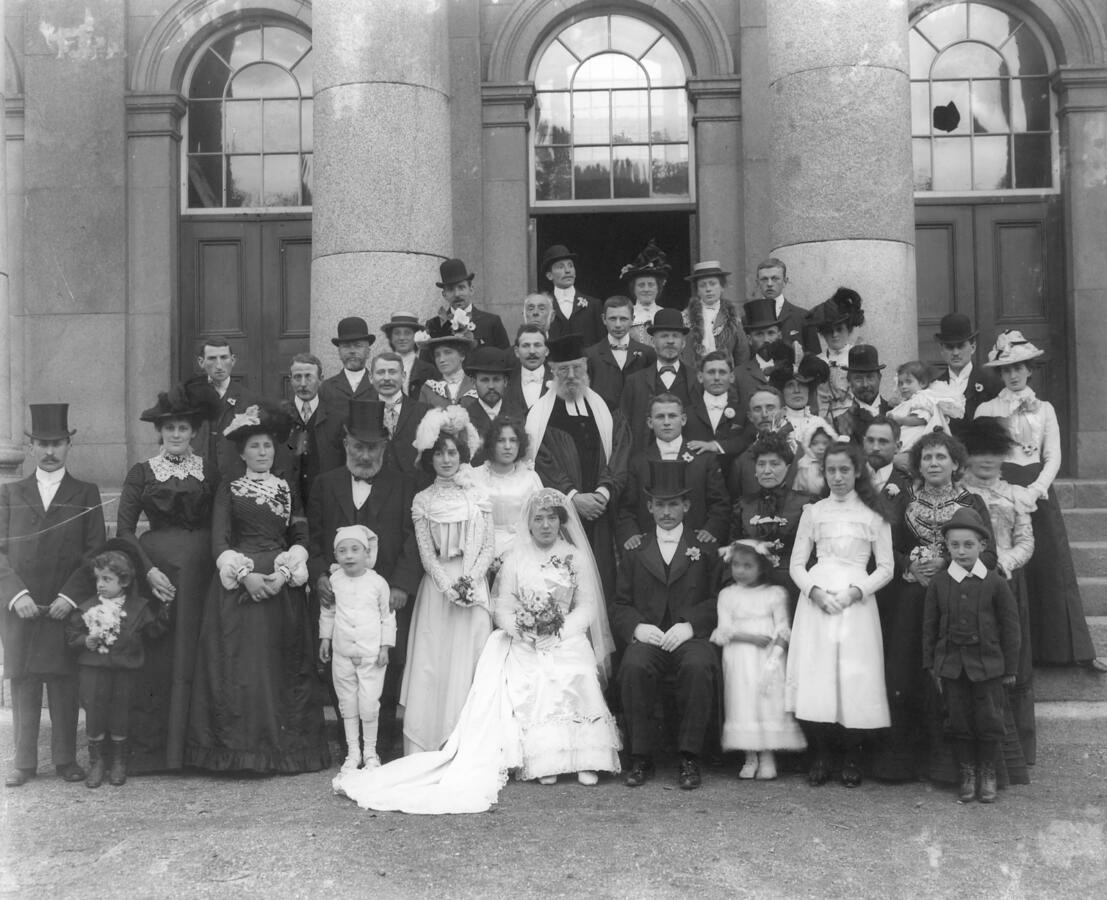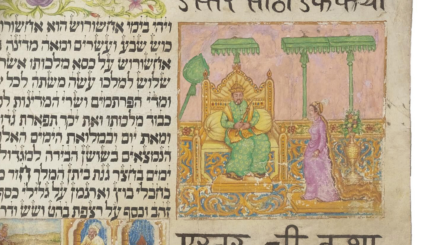Jews have made their home in Ireland for centuries, and many have risen to be successful and prominent figures in politics, business, and theology. Ireland produced Chaim Herzog, the sixth president of Israel, and Leopold Bloom, the hero of James Joyce’s “Ulysses,” a canonical Irish text, is a Jew. However, the Irish Jewish community can hardly be called thriving, and Jews have not always been welcomed in this predominantly Catholic country. During the Holocaust, Ireland denied refuge to Jews in search of escape from the Nazis, and anti-Semitism has been a minor but persistent problem.
Persecution and Denial of Rights
Jews first came to Ireland in 1079, when a group of five merchants, probably from Normandy, petitioned for admission and were rejected, according to the “Annals of Inisfallen,” a chronicle of the medieval history of Ireland. There were some Jews in Ireland during the 12th and 13th centuries, but when Britain expelled all of its Jews in 1290, the Jews of Ireland, too, were forced to leave.
A Jewish community wasn’t reinstated until late in the 15th century, as refugees from the Inquisition in Spain and Portugal sought a safe haven. There were only a handful of Jews living in Ireland for the next three 300 years, most of whom immigrated due to persecution in other parts of Europe. For the most part Jews lived (and still live) in and around Dublin, but there was a congregation in Cork from 1725 to 1796, and another that was established around 1860. These communities were mostly populated by people in the import business, specifically wine imports.
Catholic missionaries had some success converting the Jews, and by the end of the 1700s the synagogue in Dublin was forced to close. Contributing to the closure may have been the government’s refusal to grant citizenship to Jews, despite other bills that gave citizenship to other foreign nationals.

Help us keep Jewish knowledge accessible to millions of people around the world.
Your donation to My Jewish Learning fuels endless journeys of Jewish discovery. With your help, My Jewish Learning can continue to provide nonstop opportunities for learning, connection and growth.
In 1822 a small group of Jews arrived from Germany, Poland, and England and began to actively build the Jewish community. The Jewish population grew from 453 in 1881 to almost 4,000 in 1901. Small communities emerged in Limerick, Waterford, Belfast and Londonderry. As the community gained momentum, Irish clergy became wary. One priest in particular, Father John Creagh of Limerick, felt threatened by the Jews, and made several inflammatory sermons encouraging Catholics to boycott Jewish traders and in some cases to act violently.
READ: Killing of Two Jews Rouses Jews of Dublin (Nov. 20, 1923)
It is thought that Creagh may have been influenced by the Dreyfus Affair while he was on a trip to France. Whatever his motivation, he was fairly successful in driving Jews out of Limerick. With boycotts stifling their livelihood and physical and verbal abuse threatening their safety, most Jews from Limerick fled the country. However, after a few years Creagh was moved to Belfast by his superiors, and the Limerick community reinstated itself during World War I.
Irish Jews and Irish Independence

Although the Irish Jewish community never officially took sides regarding the Irish-British conflict, it was generally known to be sympathetic to the Irish nationalist cause. The Easter rebellion of 1916 saw many Jewish homes sheltering rebels, and Robert Briscoe, Dublin’s first Jewish mayor (but not Ireland’s first Jewish mayor — that honor goes to William Annyas, elected in 1555), was himself a member of the Irish Republican Army. Former Chief Rabbi of Ireland, Dr. Isaac Herzog, was a friend of Taoiseach (Irish for prime minister) Eamon de Valera. Additionally, a Jewish lawyer, Michael Noyk, defended members of the Irish Republican Sinn Fein Party and was friends with Michael Collins, the Irish Republican nationalist. The Irish constitution of 1937 recognized Judaism as a minority faith, and Jews were assured freedom from discrimination.
READ: Jew Elected Mayor of Dublin (June 26, 1956)
Effects of the Holocaust in Ireland
The Jews of Ireland were involved in anti-Nazi activism as early as 1933, when Chief Rabbi Herzog organized protests against the Third Reich. Robert Briscoe, who at that time was a prominent and well-respected lawmaker with the Fianna Fáil party, continuously spoke out against anti-Semitism. But Herzog and Briscoe’s efforts were to no avail in 1938 at the international conference at Evian-Les-Bains. It was in Evian that world leaders came together to discuss the European refugee problem, and Ireland effectively closed its doors to all refugees.
READ: Irish Presbyterians Protest Against Nazi Persecution of Jews (June 30, 1939)
Frank T. Cremins, the Irish representative, insisted that Ireland was having a hard enough time sustaining its native population, and would not be able to withstand an influx of immigration. The Department of Justice issued a memorandum that specifically cited the Jews as a problem, saying “As Jews do not become assimilated with the native population, like other immigrants, there is a danger than any big increase in their numbers might create a social problem.”
World War II was a troublesome time for Jews around the world, but the Irish Jewish community was relatively safe. Ireland was considered a neutral country, but some anti-British sympathy led to limited support of Germany, mostly in the spirit of “the enemy of my enemy is my friend.” Nazi records from the Wannsee Conference in 1942 mark 4,000 Irish Jews for death, under the assumption that Ireland would eventually fall under the control of the Third Reich. The Nazis were nowhere near successful in this venture. There is only one known Irish Jewish casualty of the Holocaust.
Amazingly, the Irish Jewish community helped save hundreds of Jewish children from Vienna. The children escaped the Nazis via a Kindertransport train, and were taken to a farm in County Down, Northern Ireland. The farm was leased by the Belfast Jewish Community in 1938 with assistance and support from Jews in the Republic.
READ: Jewish Orphans Arrive in Ireland from Prague (Feb. 25, 1946)
Once the war was over, Taoiseach Eamon de Valera allowed more than 100 orphans from Czechoslovakia to stay in Clonyn Castle in Delvin, Co. Westmeath for about 15 months before they emigrated to the United States, Israel, and the United Kingdom.
Jewish Community in Ireland Today
The Jewish population peaked at approximately 5,500 in the late 1940s, and today there are fewer than 2,000. The remaining community is shrinking, and the past 20 years has seen many Jewish buildings sold or closed, and are now used for other purposes. There are three Jewish congregations left in Dublin — two Orthodox and one Progressive. There are also Orthodox congregations in Belfast. One in Cork closed in February of 2016.




